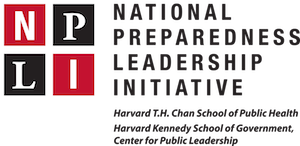sponsor content What's this?

Making the Case for Leadership Development as an Imperative
New and revised policies, procedures and good intentions are not sufficient to help our workforce meet and exceed mission requirements. What’s needed is a full commitment to the development of our nation’s leaders from the moment they enter the workforce until they are prepared to transition into retirement.
Presented by
Harvard NPLI

Today government employees and their organizations are facing far greater challenges then in the past at an accelerating pace. The constant demand for higher levels of achievement, the rapid pace of change, the complex composition of the workforce, shifting priorities, and rapidly evolving technologies add to the tremendous pressure placed on the workforce. As a consequence, the focus is naturally shifting from realizing a future vision to becoming embroiled in day-to-day tasks and transactions.
This means organizations and the people operating within them are working harder but are losing the capacity to contribute to their fullest and adapt when new challenges or crises emerge. New and revised policies, procedures and good intentions are not sufficient to help our workforce meet and exceed mission requirements. What’s needed is a full commitment to the development of our nation’s leaders from the moment they enter the workforce until they are prepared to transition into retirement. This level of development is necessary within each government agency with substantial support from the top. So, what must be done to alter our current course?
Having observed leaders in numerous settings both private and public over the course of the past 35 years, we have noticed significant changes in the way leaders attract and maintain followers in a meaningful way to deliver a public value or good. Unfortunately, this trend is not moving in a positive direction. While there are many leadership development offerings, they tend to be episodic rather than intentional and systematic. Purposeful development of leaders at all levels of our organizations is absolutely necessary if we are to assure that as many people as possible in all of our government organizations are contributing to the fullest extent of their potential, particularly as these individuals begin to work in larger teams.
What steps can organizations take to begin to more deliberately develop their leaders? As a critical first step agencies need to develop a comprehensive strategy that focuses on strengthening individual leadership capacity and capability across a 30 to 40-year career. Current leaders must understand that this effort will take a number of years to construct and require an ample investment of time and dollars to produce the desired outcomes. Continued support of the status quo related to leadership development will only result in more and more transactional work and fail to help the workforce reach their full mission-directed potential.
A comprehensive approach should include two critical components one that will focus on the day-to-day development between the leader and their supervisor and the second will complement this effort and focus on outside-of-the-workplace leadership development and training. The first will be jump started by completion of a competency-based assessment that allows the individual and their supervisor an opportunity to identify leader competency strengths, weaknesses, and gaps which can be used as a basis to guide the individual’s development. The assessment, completed independently by the supervisor and the individual, will reveal how each perceives competence and from this determine where there are areas that will be the foundation for growth. The key leader competencies we identify are:
- Open to new ideas and excited about options,
- A high-performing “macro-manager”,
- Sets clear and consistent direction,
- Empowers others,
- Demonstrates a fearless attitude and takes risk,
- Is self-aware and socially engaged,
- Drives a deliberative process to have impact,
- Develops self and others,
- Creates and sustains meaningful relationships,
- Effective communicator,
- Adapts to changing conditions to continue to drive actions, and
- Allows risk to drive innovative actions.
The second component focuses on outside-of-work development opportunities such as internal organizational leader academies or external training programs. These efforts provide a variety of leader perspectives and insights that complement the development plan that the individual is working on with their supervisor. A great example of an outside activity that has been training senior leaders since 2005 is the National Preparedness Leadership Initiative (NPLI), a joint program between the Harvard T.H. Chan School of Public Health and the Center for Public Leadership at the Harvard Kennedy School of Government. This two-week in residence program in Cambridge, MA combines didactic training, lectures from high-level leaders, case studies, and a six-month action learning project with a focus on developing participants’ skills as Meta-leaders.
To support the new or younger leader the NPLI will launch the Emerging Leaders in Crisis program in March 2019. In this one-week training program, participants will build proficiency in leader competencies through classroom training, action learning exercises, and a day-long leader challenge as they begin their leadership journey. Along with the advanced leader Master Symposium that caps the NPLI leadership learning experience, the program is now offering outside-of-work experiences that will inform and influence their career-long developmental journey – as a young leader, an engaged leader, and as a senior executive leader.
However, this alone is only the beginning. Our government organizations must strive to create a culture of leadership development in their organizations—the first to receive attention and the last to be neglected—in order to deliver on their core mission in the future. Our agencies will need leaders at every level of the operation so that our government workforce can lead where they are, reach their full potential, and meet the needs of the nation and its citizens through exemplary public service, even in the face of rapidly changing circumstances. Action is needed now and we are confident that with a clear vision and the right amount of leader support over time, we can lead more effectively and ensure our workforce is fully adaptable to embrace the growing future challenge.
For additional information about our leadership training programs - NPLI Executive Education Program (EEP), or the Emerging Leaders in Crisis (ELC) program, or our Meta-Leadership practice please visit our website at https://npli.sph.harvard.edu/.
This content is made possible by Harvard NPLI. The editorial staff of Government Executive was not involved in its preparation.
NEXT STORY: Face Your Future with Confidence






